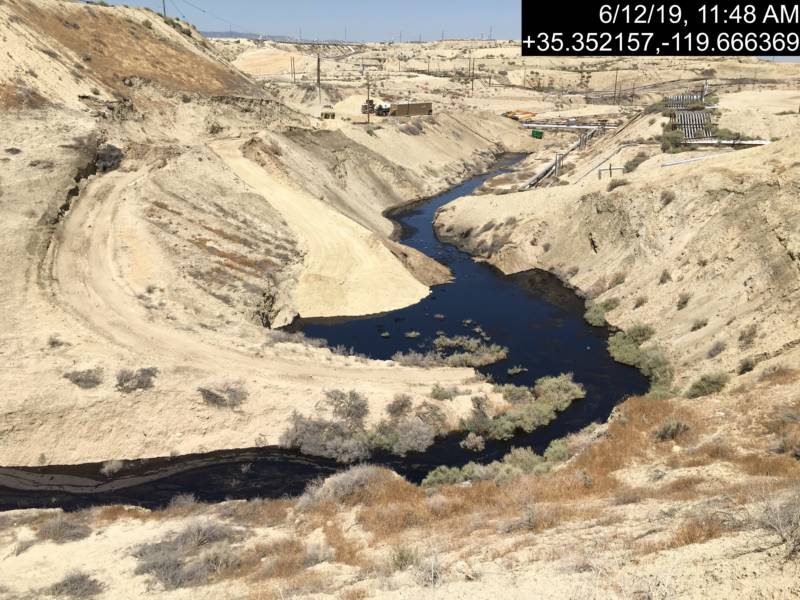The company said no new fluid had come to the surface near the well site since Tuesday, July 9, and that the 90 percent of the released material has been recovered. The company has also said the incident has not affected waterways or wildlife.
Teresa Schilling, a spokesperson for the Department of Conservation, which oversees DOGGR, said in an email Saturday that the division's inspectors were at the well site and have confirmed that the flow was contained.
The surface flows near the Chevron well began May 10, halted for a time, then started up again on June 8 and once more on June 23.
The incident took place in an area where Chevron and other companies operate oil wells, many using a method in which steam is injected far underground to heat up underground crude to make it easier to extract.
The DOGGR order noted that state regulations bar steam injection projects from producing surface expressions like the one that started in May.
After KQED's initial reports of the release, environmentalists blasted the oil industry and the agency that oversees it.
"The Chevron spill clearly shows that California needs stronger climate leadership from the governor," said Annie Leonard, executive director of Greenpeace USA, in a statement Friday morning.
"Oil and gas infrastructure will never be free from spills and leaks or from spewing climate pollution. We face a growing public health crisis and climate emergency stoked by rampant oil and gas development," Leonard said.
Within 10 days of Friday's order, a Chevron technical team is required to meet with DOGGR officials and provide the agency with data about the incident, including information about its oil well operations in the area over the last two years.
Regulations allow Chevron to appeal the order. But if it remains in effect and the company does not comply, DOGGR says the company faces a series of fines and more enforcement actions that could include the division rejecting Chevron applications for future oil well operations .

